If you were an adult living in the U.S. in the 1850s, you wouldn’t find anything wrong with your times. However, if you were to time-travel there from today, the newspapers of that time are going to be a surprise. Why? Well, look for yourself:
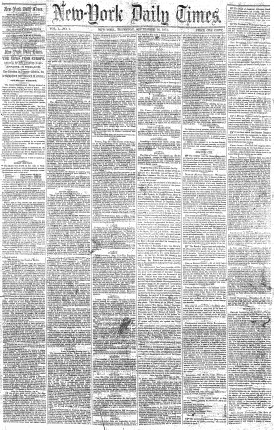
This is how the New York Times dated September 18, 1851 looked like. It has a savvy, neat format focussed on news with the ending pages taking care of any promotional requirements such as ads.
Oh yes! This is what advertisements used to be in the beginning: mere frills on the papers filled with solid blocks of news. If you look at newspapers even in the following decades, the format pretty much stays the same. This means the 1860s, 1870s and even the 1880s had more news in their newspapers than what we have today. Pretty shocking, huh?
As a result of this, the handful of ads that were indeed present were largely text-based with minor variations in font to make a point. As an example, here is one ad for a summer resort in a newspaper dated July 15, 1857 of New York Times.

However, as time passed, the visible effort to make the ad more effective and appealing became quite visible. I found this advertisement in an NYT newspaper dated May 13, 1869. There is a significant improvement in the formatting as compared to the previous ad.
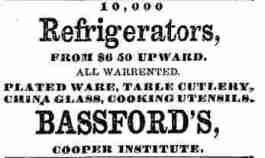
Fast forward around 15 years and here we have an advertisement from the NYT edition dated June 5, 1885. Notice the improved utilisation of space, what with how the tagline ‘the best and cheapest laxative’ hangs alongside the brand name. As you can notice here, this is an improvement over the above advert that basically had the main text formatted in a centre-align format.
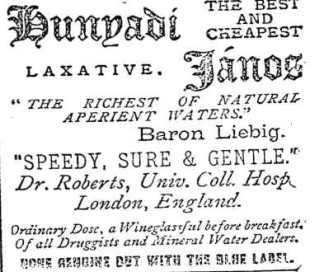
Roughly around the same time in the United Kingdom, Thomas J. Barratt, aka the Father of Modern Advertising, became a part of Pears soap after marrying the eldest daughter of Francis Pears. He introduced several radical ideas under his leadership as he began advertising Pears soap. Here is an 1895 ad for Pears soap.
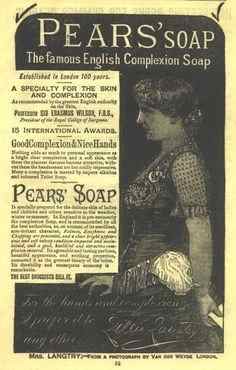
Do you notice the woman standing?
She was Lillie Langtry, a famous actress at the time who also happens to be one of the first celebrities to do product endorsement. You can now begin to fathom just what made Thomas Barratt the Father of Modern Advertising. He got a celebrity endorsement for his brand like a 115 years back!
The outset of 1900s saw a drastic change in the way newspapers looked. One thing to know of before we proceed on this is that an advertisement comprises of two parts: the copy (i.e. the text you see) and the design (i.e. the pictures). This needs to be kept in mind for what’s next.
So as I mentioned, the presence of advertisements was gradually increasing. By the time I hit a 1932 paper, I found a huge ad coverage much closer to the one we have even today. One more thing to note here is the less text-heavy copy used as compared to the past. Here, take a look:
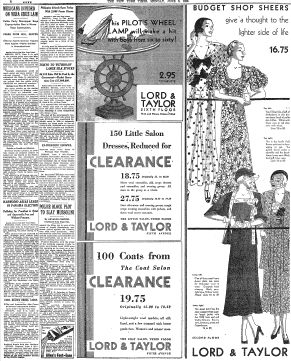
Another thing that is blatantly obvious is the quality of graphics in those pre-Photoshop times. I mean this 1923 ad for car horns looks more like a child abuse advert and can definitely use some edits, right?
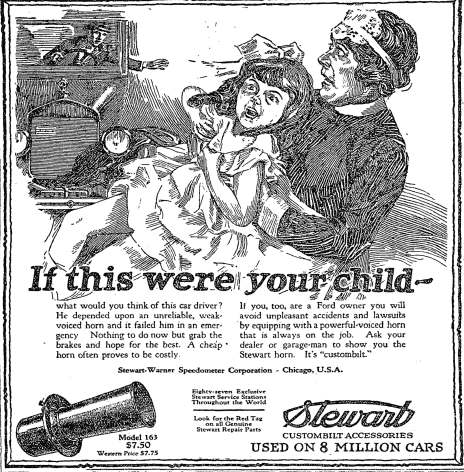
As is the case with any self-evolving process, advertising improved over time at its own pace. Here is a Macy’s advert from June 5, 1945 in the New York Times which looks much closer to the ads we have today than in the past, which means reduced text and increased graphics (partially owing to our reduced attention spans):
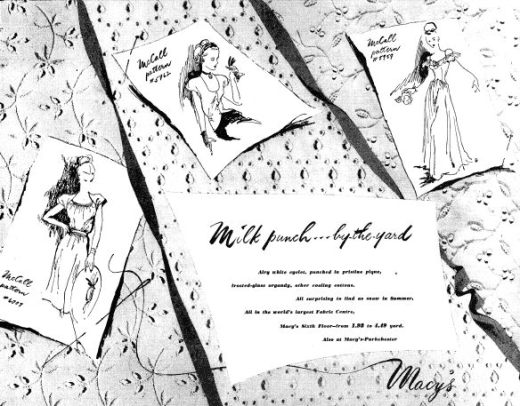
Moreover, the turn of the 20th century made advertisers realise the effect of target group’s mindset on their overall sales and brand perception.
As an example, here we have a 1956 advertisement by Kellogg’s with the stereotypical image of a dedicated mother trying to ensure a nutritious breakfast for her kids. Since the decision about food lies more towards the mothers (backed by data), brands began to focus on appealing to the sentiment of the main buyer.
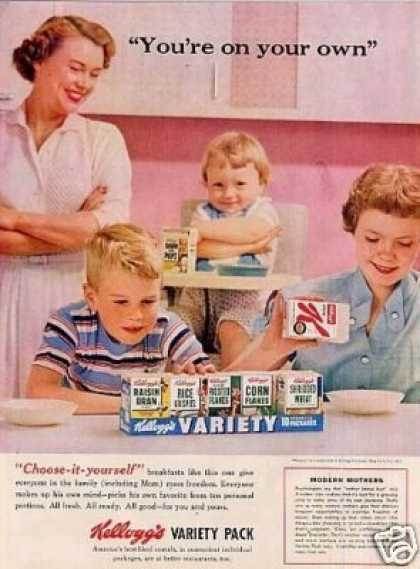
As technology got better, so did the universal appeal of the ads with the best part being the arrival of the Internet, that gave rise to Digital advertising.
Notice that in this 150-years long history of ads, the main idea has evolved from selling ‘what they have to offer’ to ‘what a consumer really/secretly/clearly/regularly wants’ and then doing that in a million different ways.
Source of this post:
A couple of years back, I was chosen as one of the Quora Top Writers for 2016. It brought many perks with it but the best one was an year’s subscription to the New York Times. Initially, I didn’t think much of it but things changed when I got to know about their TimesMachine feature. It is an archive of their newspapers beginning from the year 1850 and straight upto today. Since the first advertising agency (of U.S.) was established in 1840, this felt like a unique opportunity to explore history in real-time. What started as a mere attempt to read historic events in real-time turned into a full-fledged dive into the history of advertising.
Moreover, this article is in no way a comprehensive history of advertising across all the continents. There is a possibility that this evolution took place in a different order or timeline in other countries.
Hope you enjoy reading it just as much as I enjoyed researching on it 🙂

© A succinct history of advertising by Neha Sharma is licensed under a Creative Commons Attribution-NonCommercial-NoDerivatives 4.0 International License.

That is some extensive research ..good job Neha . I enjoyed reading this
LikeLiked by 2 people
Thanks Sakshi! It was pretty amazing reading all these newspapers too ❤
LikeLike
It truly is amazing to view the changes that occurred over the years. Thanks for putting this together, it was a fun read.
LikeLiked by 3 people
Thanks a lot, Rob. It was super fun to write this one 🙂
LikeLike
This was an interesting read, Neha! Thanks for sharing 🙂
LikeLiked by 3 people
So glad you liked it, Soundarya ❤
LikeLiked by 1 person
Handy information Neha…
LikeLiked by 1 person
Glad you liked it, Nikita 🙂
LikeLiked by 1 person
This is such a great read. Loved it
LikeLiked by 1 person
Thanks Shantanu. So glad it clicked with you 🙂
LikeLiked by 1 person
My pleasure always
LikeLiked by 1 person
🙂 🙂
LikeLiked by 1 person
Thats a very informative post and good to know about history
LikeLiked by 2 people
Thanks Ravi. So glad you liked it 🙂
LikeLike
That was an intriguing read. Certainly thanks for writing about this.
This also gives a sneek peek into how humans have evolved over the centuries.🤗
LikeLiked by 1 person
It sure does 🙂
LikeLiked by 1 person
The writing was soo good.🤗💐
LikeLiked by 1 person
Thanks again 🙂
LikeLiked by 2 people
Such a fascinating read 🙂
LikeLiked by 1 person
Thanks Abhinav. Glad you liked it 🙂
LikeLiked by 1 person
Interesting. I keep thinking how advertisements today are strangely cryptic!
LikeLiked by 1 person
Haha. That’s a pretty unique insight 🙂
LikeLiked by 1 person
Thanks for the post, definitely inputs alot of information about the past and how news media has evolved over time… it’s just interesting to see how people back then were willing to read so much words on a piece of paper whereas this generation of people are not even willing to read anything more than a few hundred words. Nice post 🙂
LikeLiked by 1 person
Thank you! So glad you liked it 🙂
LikeLike
Great piece. Today’s news really only exist because of advertising. The media is not bringing you news they are bringing you to the advertisements. For some interesting analysis of advertising look at the work of Douglas Rushkoff.
LikeLiked by 1 person
Thanks for the compliment. I will definitely look into this book 🙂
LikeLike
agree with all the above, its a fascinating read, well put together.
I have done some brief forays into advertising with Philip Adams, a great Australian writer and one trick was to tear out each full page ad of the magazines you buy regularly. Place those ads side by side and you can clearly see the audience the mag is aimed at!
In other words mags decide their target audience sell the ad space then write a few articles to fill in between … the exact opposite of what they did back in the 1800’s.
Now most ad agencies employ full-time top psychologists whose research targets the audience! Nothing left to guess work anymore just like the digital ads 😦
LikeLiked by 1 person
Thanks for such an insightful comment, Kate! It is pretty crazy just how much of psychological tactics are employed to make you buy a bottle of water these days. What started out with such humble origins is now the sole moneymaker of news agencies.
LikeLiked by 1 person
money is the god of all commercial enterprises … buyer beware!
LikeLiked by 1 person
haha true that! 🙂
LikeLiked by 1 person
WOW! great read.
LikeLiked by 1 person
Thanks a lot. So glad it resonated with you 🙂
LikeLiked by 1 person
This is very insightful.
LikeLiked by 1 person
Thank you, Lavanya! I am glad you find it insightful 🙂
LikeLike
I’m studying copywriting on the side, so this is a really fascinating and useful read to me. Thank you! 😊
LikeLiked by 1 person
I am so glad it was of some fruitful use to you 🙂
LikeLike
Splendid! 🙂
Increased my knowledge!
LikeLiked by 1 person
I am glad it helped 🙂
LikeLike
I love this post! In the fall I visited thee Transit Museum in NYC and saw the ads on the trains dating back to the end of the 19th century! So interesting to compare the similarities and differences.
LikeLiked by 1 person
I have always found history fascinating as well 🙂
LikeLiked by 1 person
A lot of work put into this.. Very good read! Thank you 🙂
LikeLiked by 1 person
Thanks for reading it, Aks. I am glad you liked it 🙂
LikeLike
Wow, this was such a fascinating read. I love how advertising evolved from strictly formal format to a much more informal, playful and emotionally appealing. I can’t remember the guys name but a celeb endorsement? Genius man.
LikeLiked by 1 person
Haha yes! Even I was amazed to read about this. 115 years back, people typed stuff in centre-aligned format and called that an ad. This guy goes to an actress for endorsement! I just realised I got amazed yet again while typing this comment. Now we know why he is called the Father of Modern Advertising 😀 😀
LikeLike
Hi again Neha, thanks for sending me the link to this post – I enjoyed it, especially seeing those early ads comprised of just text. Some of my favourite print ads are from the 1920s to 30s which capture the fashions, style and emerging technologies, often beautifully depicted in the art style of the day (like the Lord and Taylor ad you showed). Another period I enjoy is the 60s and 70s – again many of these ads are drawn and painted by talented artists and often reflect the trends of the period. I think in the 80s and 90s there was a bigger shift to photographs as opposed to drawn art. Talking from a toy advertising point of view, some of the photo dioramas created of the toys back then are a joy to behold. I find it interesting how advertising evolves or is limited by its budget, available technologies, creative teams and the target audience.
Thanks again 🙂
LikeLiked by 1 person
Thanks for such a detailed comment! I had a hunch that based on your blog name, you might like this post. So glad to know I made the right call. It is always a pleasure to know that my content interested a reader 🙂 🙂
LikeLiked by 1 person
Really interesting
Thank you for sharing
❤
LikeLiked by 1 person